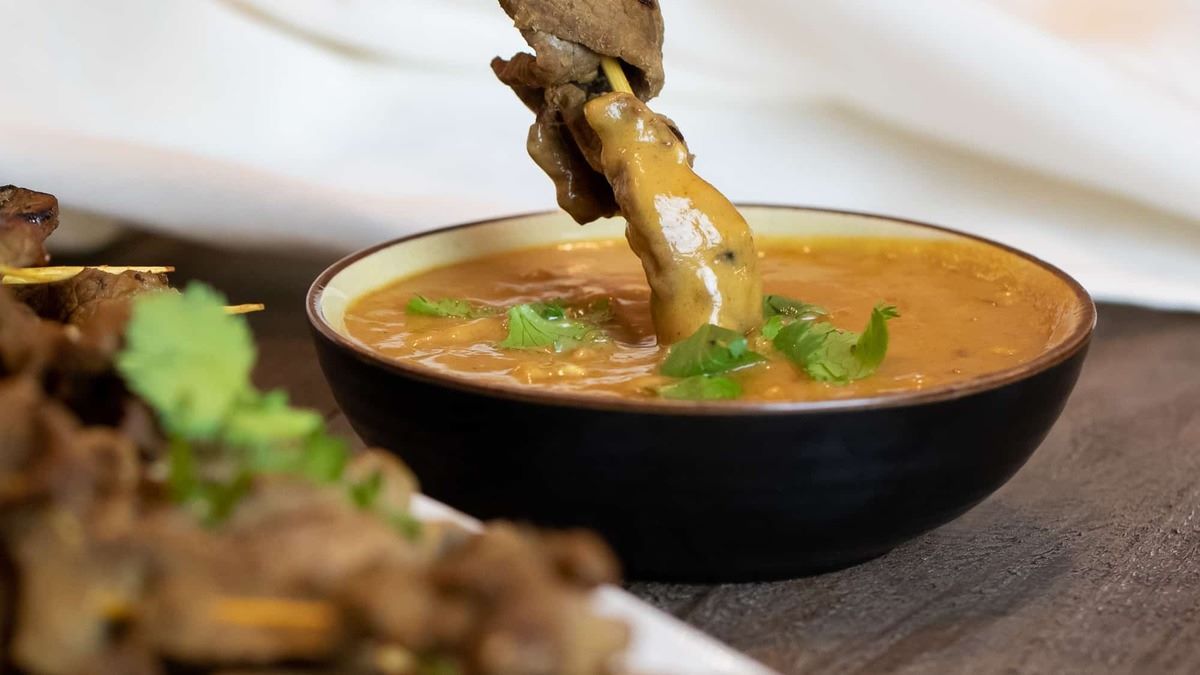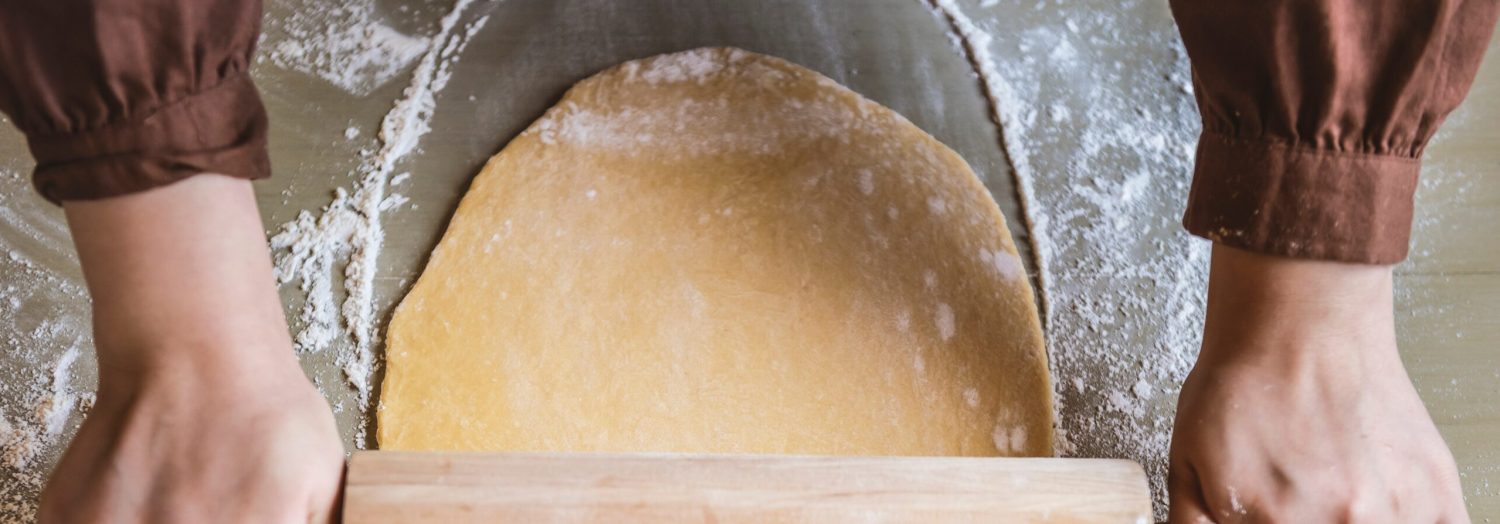I’m really excited to share this Thai curry peanut sauce recipe with you because it’s one of my favorite ways to add a rich, creamy flavor to so many dishes. It’s simple to make and tastes like something you’d get at a restaurant, but you can whip it up at home anytime. Keep scrolling to see how easy it is to bring a little bit of Thailand into your kitchen.
Some ingredients in this recipe might be new if you haven’t cooked Thai food before. Red curry paste is a spicy, flavorful mix you can find in the international aisle of most supermarkets or at Asian grocery stores. Coconut milk is a creamy base that adds richness, and peanut butter gives the sauce a smooth, nutty taste. If you don’t have fresh garlic or ginger, you can use the powdered versions, but fresh will give you the best flavor.

Ingredients For Thai Curry Peanut Sauce Recipe
Coconut milk: A creamy liquid made from grated coconut, it adds richness and smoothness to the sauce.
Peanut butter: Gives the sauce a nutty flavor and creamy texture.
Red curry paste: A spicy and aromatic paste made from red chilies and spices, essential for authentic Thai flavor.
Soy sauce: Adds saltiness and depth to balance the sweetness and spice.
Lime juice: Provides a fresh, tangy brightness to the sauce.
Brown sugar: Adds a touch of sweetness to balance the heat and sourness.
Garlic: Fresh garlic gives a sharp, savory flavor.
Ginger: Adds a warm, slightly spicy note that complements the other ingredients.
Technique Tip for This Recipe
One of the most helpful moves in this Thai Curry Peanut Sauce recipe is stirring the coconut milk, peanut butter, and red curry paste together until smooth. Here’s how to do it so your sauce turns out creamy and delicious:
- Use a spoon or a whisk to gently mix the ingredients in the saucepan over medium heat.
- Keep stirring slowly but steadily, making sure to scrape the sides and bottom of the pan so nothing sticks or burns.
- If you see any lumps of peanut butter or curry paste, keep stirring until they melt and blend completely into the coconut milk.
- Once the mixture looks smooth and even, you can add the rest of the ingredients.
Stirring like this helps the flavors mix well and stops the sauce from getting lumpy or burning on the bottom. When the sauce is smooth, it tastes richer and looks prettier on your plate. Plus, stirring often means you won’t have to worry about cleaning a burnt pan later!
I remember the first time I made this sauce, I didn’t stir enough and ended up with little chunks of peanut butter that didn’t melt. It wasn’t bad, but it wasn’t as creamy as I wanted. Now, I always keep a close eye on the pan and stir gently but often. It’s a simple step that makes a big difference. Also, if you’re in a hurry, you can use a whisk instead of a spoon—it helps break up lumps faster and gets everything smooth in no time. Just be careful not to splash the sauce out of the pan!
Taking a few minutes to stir well really pays off with this Thai curry peanut sauce. It’s worth the little extra attention for a sauce that’s silky, tasty, and perfect for drizzling over noodles, veggies, or grilled chicken.
Suggested Side Dishes
Alternative Ingredients
coconut milk - Substitute with almond milk: Almond milk provides a similar creamy texture, though it will have a slightly different flavor profile.
peanut butter - Substitute with almond butter: Almond butter has a similar consistency and nutty flavor, making it a good alternative.
red curry paste - Substitute with yellow curry paste: Yellow curry paste can be used if red curry paste is unavailable, though it will alter the color and flavor slightly.
soy sauce - Substitute with tamari: Tamari is a gluten-free alternative to soy sauce with a similar taste.
lime juice - Substitute with lemon juice: Lemon juice provides a similar acidity and citrus flavor.
brown sugar - Substitute with honey: Honey adds sweetness and a slightly different flavor but works well in the sauce.
garlic - Substitute with garlic powder: Garlic powder can be used in place of fresh garlic, though it is less potent.
ginger - Substitute with ground ginger: Ground ginger can replace fresh ginger, though it is more concentrated, so use less.
Other Alternative Recipes Similar to This
How to Store / Freeze This Recipe
Allow the Thai curry peanut sauce to cool completely before storing. This helps prevent condensation, which can dilute the sauce and alter its flavor.
Transfer the sauce into an airtight container. Glass jars or BPA-free plastic containers work best to maintain the sauce's freshness and prevent any unwanted flavors from seeping in.
Label the container with the date of preparation. This helps you keep track of its shelf life and ensures you use it while it's still at its best.
Store the container in the refrigerator. The sauce will keep well for up to a week. Make sure the refrigerator is set to a temperature below 40°F (4°C) to maintain optimal freshness.
For longer storage, consider freezing the sauce. Pour it into freezer-safe containers or heavy-duty freezer bags. Leave some space at the top of the container or bag to allow for expansion as the sauce freezes.
Label the freezer containers with the date. This helps you keep track of how long the sauce has been stored and ensures you use it within the recommended time frame.
The Thai curry peanut sauce can be frozen for up to three months. For best results, use it within this period to enjoy its full flavor and texture.
When ready to use, thaw the sauce in the refrigerator overnight. This gradual thawing process helps maintain its consistency and flavor.
If you're in a hurry, you can also thaw the sauce by placing the sealed container or bag in a bowl of cold water. Change the water every 30 minutes until the sauce is fully thawed.
Once thawed, reheat the sauce gently in a saucepan over low heat. Stir occasionally to ensure even heating and to restore its smooth, creamy texture.
If the sauce appears too thick after reheating, you can thin it out by adding a small amount of coconut milk or water. Stir well to incorporate the liquid and achieve the desired consistency.
Avoid refreezing the sauce once it has been thawed and reheated. This can affect its texture and flavor, making it less enjoyable.
How to Reheat Leftovers
For stovetop reheating, pour the Thai Curry Peanut Sauce into a small saucepan and warm it over low to medium heat. Stir occasionally to ensure it heats evenly and doesn't stick to the bottom. If the sauce thickens too much, add a splash of coconut milk or water to reach your desired consistency.
If you prefer using a microwave, transfer the sauce to a microwave-safe bowl. Cover it with a microwave-safe lid or a damp paper towel to prevent splatters. Heat on medium power in 30-second intervals, stirring in between, until the sauce is warmed through. Add a bit of coconut milk or water if needed to adjust the thickness.
For a double boiler method, place the sauce in a heatproof bowl and set it over a pot of simmering water. Stir occasionally until the sauce is heated evenly. This gentle method helps prevent the sauce from burning or separating.
If you have a slow cooker, you can reheat the Thai Curry Peanut Sauce on the low setting. Pour the sauce into the slow cooker and cover it. Stir occasionally and let it warm up gradually, which can take about 30 minutes to an hour depending on the quantity.
For those who own a sous vide machine, place the sauce in a vacuum-sealed bag or a resealable bag with the air removed. Set the sous vide to 140°F (60°C) and immerse the bag in the water bath. Heat for about 20-30 minutes until the sauce is warmed through. This method ensures the sauce retains its creamy texture without any risk of burning.
Best Tools for This Recipe
Saucepan: A medium-sized pan used to combine and heat the ingredients over medium heat.
Wooden spoon: Ideal for stirring the mixture until smooth and well combined.
Measuring cups: Used to measure out the coconut milk and peanut butter accurately.
Measuring spoons: Essential for measuring out the red curry paste, soy sauce, lime juice, and brown sugar.
Garlic press: Handy for mincing the garlic clove efficiently.
Microplane grater: Perfect for mincing the ginger finely.
Cutting board: Provides a stable surface for mincing the garlic and ginger.
Chef's knife: Used for mincing the garlic and ginger with precision.
Whisk: Helps in ensuring the sauce is smooth and well combined.
Ladle: Useful for serving the sauce once it's ready.
Heat-resistant spatula: Great for scraping down the sides of the saucepan to ensure all ingredients are well mixed.
Timer: Helps keep track of the simmering time to avoid overcooking.
How to Save Time on Making This Recipe
Prepare ingredients ahead: Measure and chop all ingredients like garlic and ginger before you start cooking.
Use one pot: Combine all ingredients in one saucepan to minimize cleanup time.
Pre-mix sauces: Mix soy sauce, lime juice, and brown sugar in a small bowl before adding to the saucepan.
Simmer efficiently: Keep the heat at medium to ensure the sauce thickens quickly without burning.
Store for later: Make a double batch and store extra sauce in the fridge for quick meals later.

Thai Curry Peanut Sauce Recipe
Ingredients
Main Ingredients
- 1 cup coconut milk
- ¼ cup peanut butter
- 2 tablespoon red curry paste
- 1 tablespoon soy sauce
- 1 tablespoon lime juice
- 1 tablespoon brown sugar
- 1 clove garlic, minced
- 1 teaspoon ginger, minced
Instructions
- In a saucepan, combine coconut milk, peanut butter, and red curry paste over medium heat.
- Stir until smooth and well combined.
- Add soy sauce, lime juice, brown sugar, garlic, and ginger.
- Simmer for 5-10 minutes, stirring occasionally.
- Remove from heat and let cool slightly before serving.
Nutritional Value
Keywords
More Amazing Recipes to Try 🙂
- Thanksgiving Turkey Recipe4 Hours 30 Minutes
- Chocolate Eclair Dessert Recipe30 Minutes
- Chicken Soup Base Recipe1 Hours
- Wild Mushroom Puff Pastry Recipe45 Minutes
- Philly Oreo Cheesecake Recipe1 Hours 5 Minutes
- Texas Sausage Kolaches Recipe1 Hours 15 Minutes
- Air Fryer Pork Meatballs Recipe25 Minutes
- Bacon Pea Salad Recipe20 Minutes


Leave a Reply